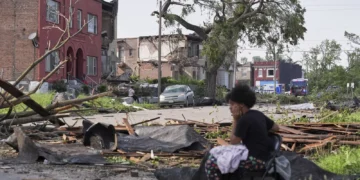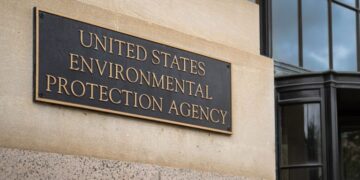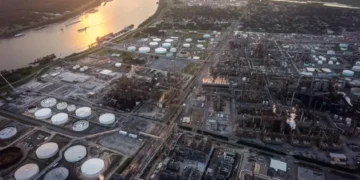April 10, 2025 Story by: Editor
Although the federal government outlawed redlining nearly sixty years ago through the Fair Housing Act of 1968, its impacts continue to plague Lansing today—particularly in communities of color.
Redlining, originally disguised as the denial of credit due to financial status, was in practice a systemic method to withhold housing loans and services from Black and brown neighborhoods. Its effects remain visible in financial inequality, environmental racism, and generational disparities in wealth and health.
The Lingering Effects of Redlining in Lansing
In East Lansing, redlining has left a legacy of economic and environmental discrimination. Despite its illegality, its consequences are still embedded in how neighborhoods are shaped and serviced today.
Craig Carpenter, a professor in Michigan State University’s Department of Agricultural, Food and Resource Economics, conducted a study mapping past redlined areas and comparing them with current demographics. He discovered strong parallels between the federal government’s 1934 redline maps and present-day socio-economic disparities.
Carpenter clarified that although the Home Owners’ Loan Corporation (HOLC) created maps marking predominantly Black neighborhoods as “risky,” it was the Federal Housing Administration and private real estate companies that enforced discriminatory lending practices.
“We find that redline mapping reduced future incomes of Black children born into redline map cities by 7 percent, and on the other hand, it increased white people’s incomes by about 3 percent and increased white people’s housing values by 35 percent,” Carpenter said.
His research also revealed that redlining widened the Black-white income gap by one-third and increased the wealth gap by 80 percent in affected areas. The ramifications didn’t stop at economics—Carpenter noted that redlining impacted educational attainment and contributed to a third of the mortality gap between Black and white Americans. This was driven by environmental hazards, poor access to nutritious food, and lack of green spaces in redlined communities.
Understanding Environmental Racism Through Redlining
Linda Villarosa, journalist and author of “Under the Skin: The Hidden Toll of Racism on Health in America,” connected redlining to environmental racism. She explained that African Americans are 75 percent more likely than other Americans to live near environmentally hazardous facilities. She cited data from the Climate Reality Project, which outlines categories like frontline and fenceline communities—often consisting of people of color disproportionately affected by pollution and climate change.
Villarosa warned of the current political threat to environmental protections. She noted that the Trump administration attempted to dismantle the Environmental Protection Agency and other regulatory bodies, which would particularly endanger communities of color.
Villarosa emphasized, “The vulnerable population became the vulnerable population because of the impact of redlining and the financial gaps that were widened as a result.”
A Lansing Example: The I-496 Project
One of the most devastating examples of redlining’s local impact was the construction of I-496 in Lansing during the 1970s. Redlined Black neighborhoods were targeted for demolition to make way for the freeway. According to the I-496 project records, 6,749 residents were displaced from the Westside Neighborhood, and over 800 homes and businesses were destroyed—with no recourse to oppose the decision.
An article at the time defended the action, referring to the neighborhood as a “ghetto” and justifying the demolition as a means of “breaking up a pattern of segregation in the area.”
A 2023 documentary, “They Even Took the Dirt,” captures the long-term effects of the I-496 demolition on Lansing’s Black community through firsthand accounts.
Environmental racism in Lansing was further confirmed by a 2019 University of Michigan study led by professor Morgan Sherburne. It identified Lansing as a “hot spot” for environmental injustice due to its high concentration of minorities and low-income residents exposed to environmental hazards.
Community Efforts to Reverse the Damage
Despite the lasting damage, Lansing community groups are actively working to dismantle redlining’s effects.
The Justice League of Greater East Lansing is one such group focused on reparations and racial justice. Founded by Willye Bryan, the league prioritizes research-driven community uplift, housing initiatives for African Americans, and scholarships for aspiring entrepreneurs.
Bryan acknowledged that while the local government has taken symbolic steps—like funding a cap over I-496—more substantial reparations are needed to truly repair the damage.
She also highlighted the role of churches, such as All Saints Episcopal Church, which acknowledged its history of racial discrimination and partnered with the Justice League to fund racial justice programs.
“The upshot is that we could plant a Justice League model in 15/20 communities around the country and use that same model to be able to generate funds, to then be able to distribute and share with the African American community,” Bryan said.
Students and the Future of Environmental Justice
Villarosa encouraged student activism through Historically Black Colleges and Universities (HBCUs) and participation in climate initiatives such as the Climate Action Summit. She also stressed the importance of environmental literacy and recommended books like “Waste” and “Holy Ground” by Catherine Flowers and works by Dr. Robert Bullard, known as the father of environmental justice.
While the damage done by redlining and environmental racism is deep-rooted, Lansing’s communities are showing that with awareness, education, and collective action, meaningful change is possible.
Understanding history is the first step—and taking action is the next.
Source: The State News

















